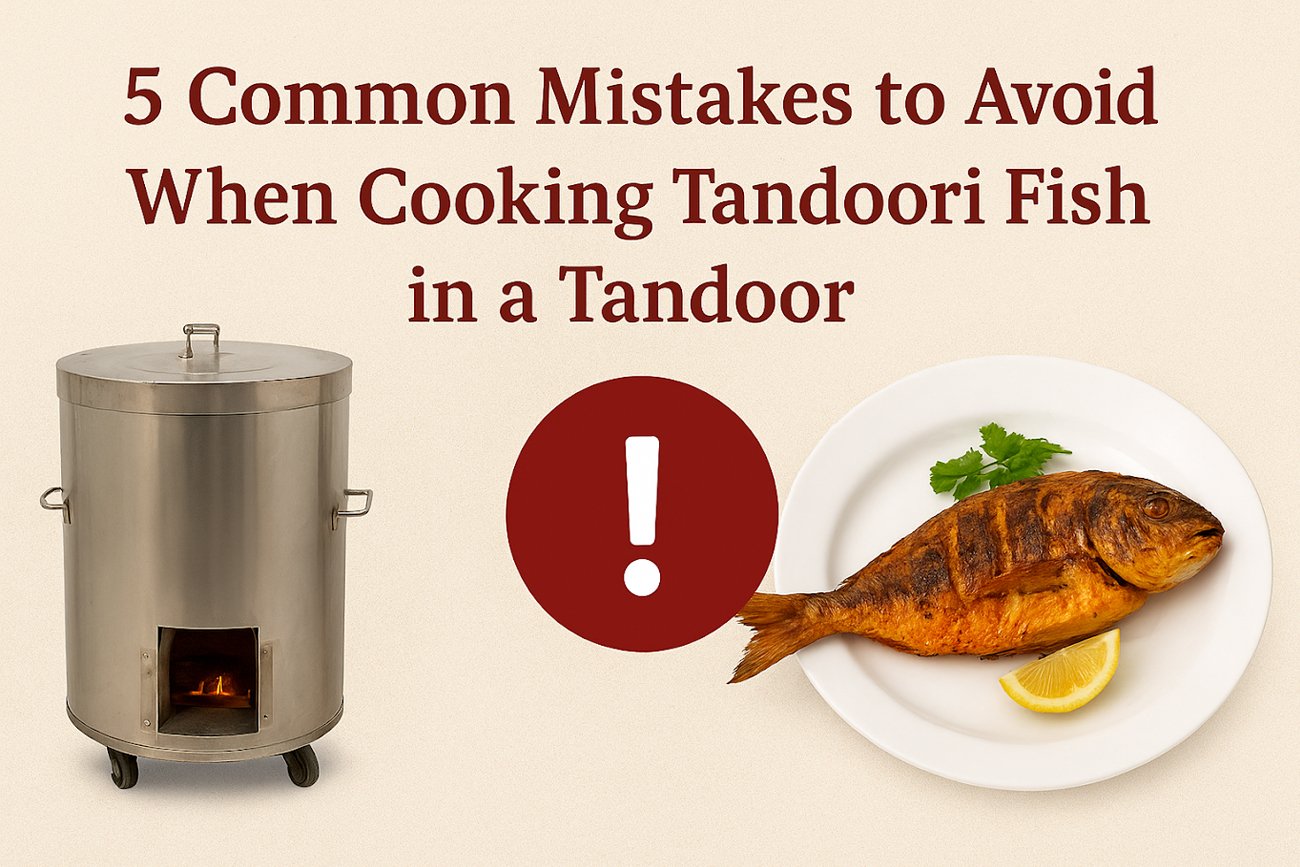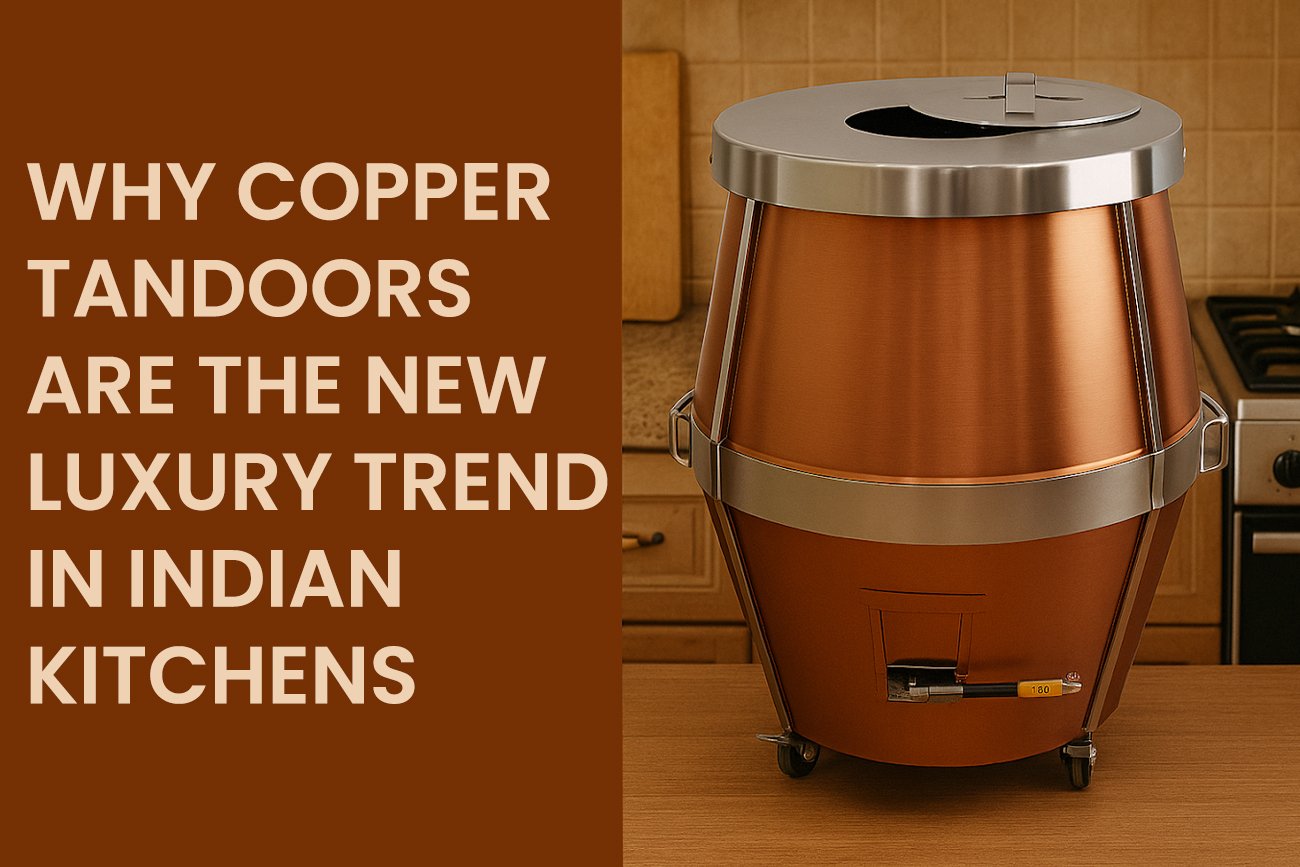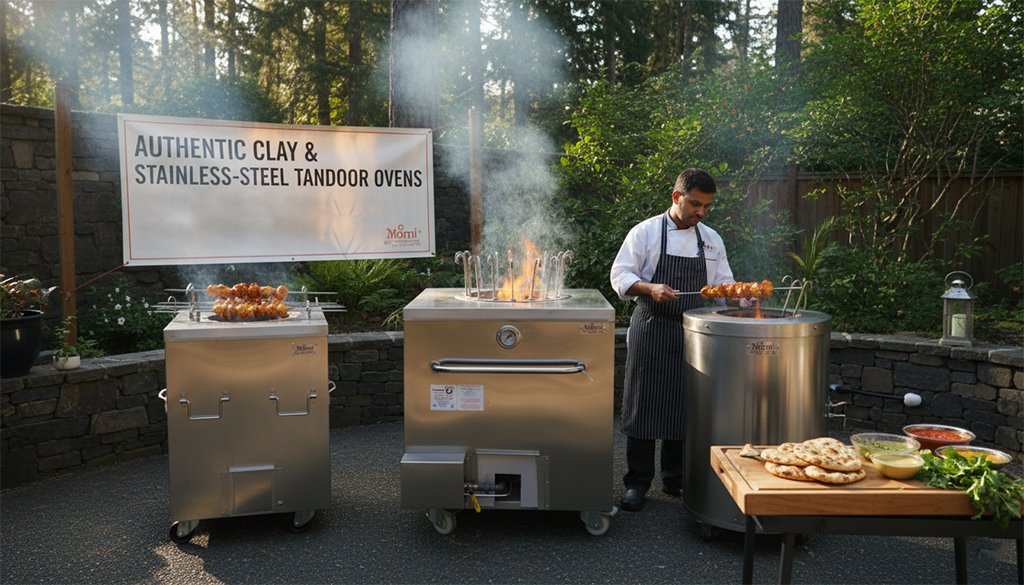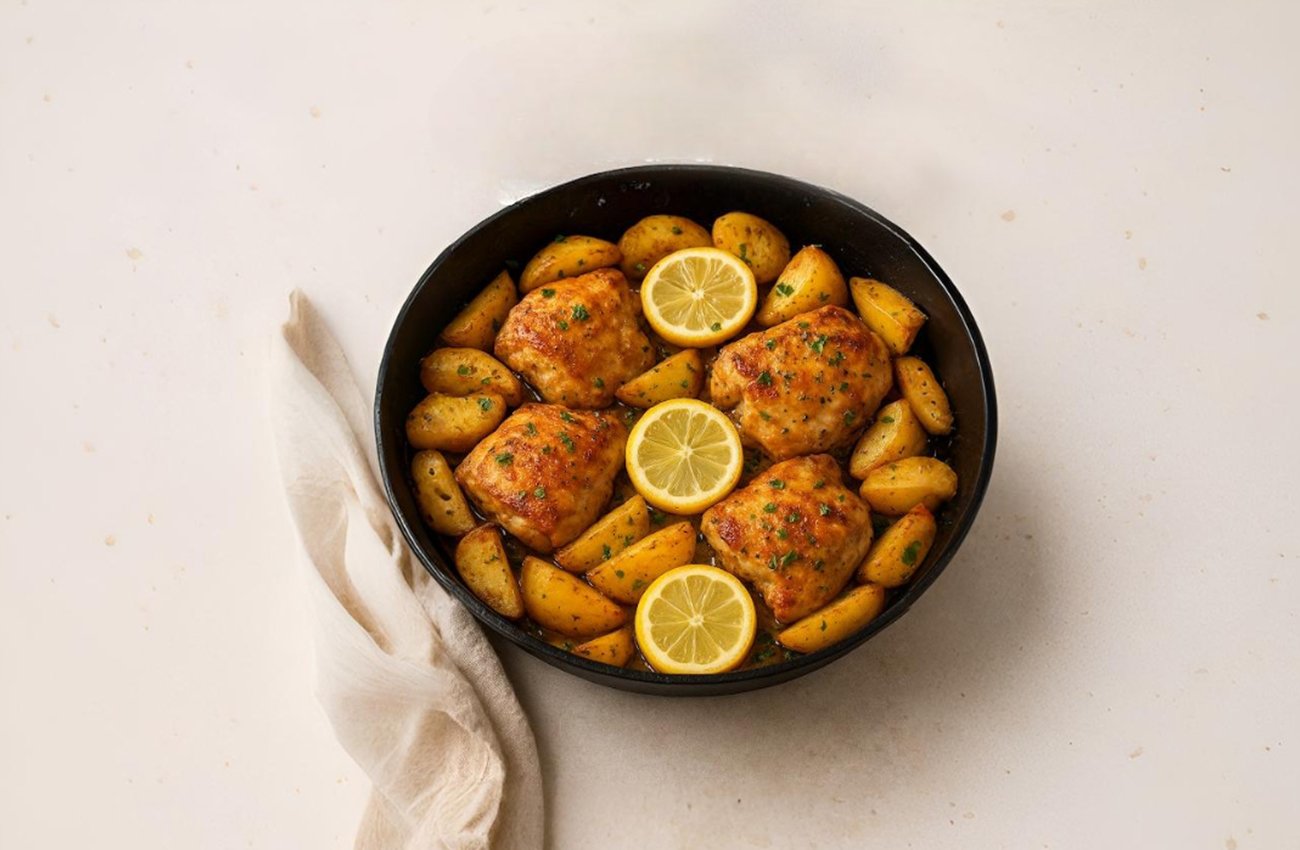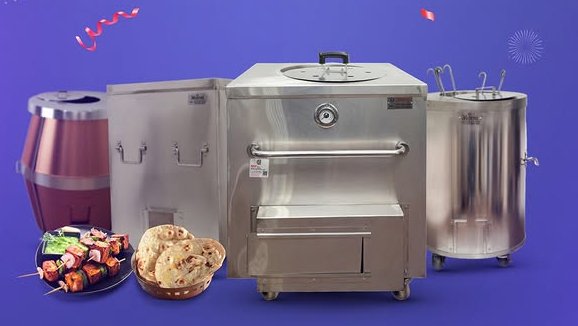
A tandoor is a particular kind of oven used in cooking. Asian cuisine has included tandoors for thousands of years. Tandoor can be used to make bread, meat, and vegetables. Many people like the distinct smokey taste of food cooked in a tandoor. Nowadays, tandoors come in different forms and sizes. While some fit houses, others are ideal for eateries. Let’s learn more about tandoors and discover which one would fit you.
What is a Tandoor?
A tandoor is a spherical oven with a relatively high inside temperature. Made of clay and fashioned like a big pot, the original tandoors looked like. People would create an interior fire using charcoal or wood. The tandoor’s walls would get heated and remain so for a considerable period.
Cooking in a tandoor differs from cooking in a standard oven. Bread sticks to the tandoor’s internal walls. Meat and vegetables fry on long metal skewers hung down into the flame. Food cooks rapidly, as tandoors may reach very high temperatures—far hotter than a conventional oven.
The heat and smoke of a tandoor provide a unique flavor to food. The exterior of the meat becomes crispy, but the inside remains juicy. Bread with burned areas becomes soft and fluffy. Tandoori cuisine is famous worldwide because of this unusual cooking technique.
Tandoor Oven Types
You may discover numerous kinds of tandoors nowadays. Each type has certain advantages and challenges.
Traditional Clay Tandoors
Made traditionally, clay tandoors give food the most authentic taste. However, they require special care and may crack if not handled properly. While they take longer to heat, they retain heat for long.
Stainless Steel Tandoors
Stainless steel tandoors have a metal exterior and a clay interior layer. They are cleaner and more durable than pure clay tandoors. Many restaurants prefer them as they are easier to maintain. Though their taste may differ slightly, stainless steel tandoors heat significantly faster than clay tandoors.
Gas Tandoors
Gas tandoors use gas flames instead of wood or charcoal. They are simple and clean. A single dial allows you to adjust the heat. Many modern restaurants find them appealing due to their ease of use. Gas tandoors maintain consistent temperatures and heat up quickly.
Electric Tandoors
Electric tandoors connect to a wall outlet. They are useful in places without gas and are safer for indoor use. While they are easier to use, electric tandoors do not provide the same smoky flavor as traditional ones.
Portable Tandoors
Smaller and more portable tandoors allow easy movement. Some look like drums with a clay pot inside. These are great for outdoor cooking and parties, providing the tandoor experience without requiring a permanent setup.
Square vs. Round Tandoors
● Square Tandoors: Modern designs are sometimes square, which saves space and fits into kitchen corners. Their insulation helps retain heat effectively. Many industrial kitchens use square tandoors as they can cook more food at once.
● Round Tandoors: Traditional round tandoors heat evenly from all sides. Many chefs believe they offer the most authentic cooking experience and are more portable than square models.
Residential Tandoor Options
Home chefs also have many residential tandoor choices. Smaller tandoors work well for family dinners. Some home tandoors run on electricity, making them safer and more convenient for indoor use.
● Portable tandoors are popular for home use. They can be used on patios or backyards and stored when not used. These tandoors are excellent for occasional use or small gatherings.
● Different sizes are available: Small tandoors: Suitable for 2–4 people. Medium tandoors: Ideal for 4–8 people. Large home tandoors: Can cook for 10–12 people.
● Pricing varies: Simple home tandoors cost around $200. Advanced models range between $500, $1000 and 2200 depending on features, materials, and size.
Choosing the Right Tandoor
Before choosing a tandoor, consider the following:
● Frequency of use: If you make tandoori meals daily, invest in a high-quality model. If you use it occasionally, a basic one may be sufficient.
● Placement: Outdoor tandoors must withstand weather conditions, while indoor tandoors require proper ventilation.
● Fuel type: A gas tandoor might be convenient if you have a natural gas line. If you prefer traditional methods, a charcoal tandoor would be better.
● Budget: A good tandoor can last for years with proper maintenance. Spending more upfront can result in better cooking results and a longer lifespan.
Conclusion
A tandoor is a unique and excellent cooking method that delivers delicious and distinct flavors. Whether you are a home cook or a restaurant owner, there is a tandoor oven that meets your needs.
● Commercial kitchens benefit from larger, more durable models with steady heat.
● Home chefs can choose smaller, more portable options that still provide authentic flavors.
Your ideal tandoor depends on your space, cooking style, and budget. Regardless of your choice, a tandoor can bring new flavors and exciting cooking experiences to your kitchen.
Visit Tandoori Morni today to discover why chefs recommend our tandoors for their outstanding quality and performance!
Get a Quote? Contact us today.
Have questions or ready to place an order? Reach out to us via phone at +1(727) 251 6924 or email us at info@tandoormorni.com. Need detailed instructions? Explore the Operation Manual for our CH & CS models to get started with your Tandoor oven today.
About Tandoor Morni
Tandoor Morni, in business since 1992, is a trusted name in premium Tandoori Clay Ovens, known for crafting high-quality traditional and commercial tandoors. With a commitment to excellence, Tandoor Morni offers a wide range of tandoors, including commercial, residential, catering, and copper models. Our tandoors are built with durable materials and designed for efficient heat distribution, ensuring authentic flavors and fast cooking. Each oven features customizable options like gas, wood fire, or charcoal compatibility, making them suitable for various cooking needs.
Common Queries – FAQ’S
Can I use a tandoor Indoors?
Yes, certain tandoor models are designed for residential use, including compact, home-friendly versions. However, using a tandoor indoors requires proper ventilation and adherence to safety precautions to manage high heat and potential smoke. Always consult the manufacturer’s guidelines to ensure safe indoor use. For best results, they are often used in well-ventilated spaces or outdoors.
Are Tandoor-Cooked Foods Healthy?
Yes, tandoor-cooked foods are often considered healthy because they typically require little to no oil. The high cooking temperatures allow the food to cook quickly, preserving nutrients while reducing the need for additional fats. Additionally, the vertical cooking method allows excess fats to drip away, resulting in leaner dishes.
What Types of Fuel Can Be Used in a Tandoor?
Tandoors can be heated using charcoal, wood, natural gas or propane. Charcoal and wood provide an authentic smoky flavor, while natural gas or propane is more convenient and easier to control. The choice of fuel often depends on the specific cooking requirements and local regulations, especially in commercial settings.
How Does a Tandoor Oven Differ from a Conventional Oven?
Unlike conventional ovens, which use electric or gas heat, a tandoor is made from clay and uses charcoal, wood, or gas to heat the walls. The cylindrical shape and porous clay walls create an environment where heat circulates evenly, cooking food quickly while adding a smoky flavor. Conventional ovens, in contrast, lack the intense heat and unique cooking technique of a tandoor.
How Much Maintenance Does a Gas Tandoor Require?
Gas Tandoor needs regular maintenance, though less than Charcoal Tandoor models. Here’s a breakdown:
- Daily Maintenance: Wipe down the inner chamber and clean the burner.
- Weekly Maintenance: Check the burner and gas line for any blockages or leaks.
- Monthly Maintenance: Deep clean the gas pipes, burners, and inner chamber.
- Quarterly Maintenance: Have a professional inspect the gas connections and burners.
- Annual Maintenance: Perform a full inspection and reapply clay lining if needed.
Avoid exposing the tandoor to excessive water, and gradually increase heat to prevent cracks.
How Can I Make a Payment for My Tandoor Order?
You can pay for your tandoor order through our website by placing an online order using the available payment options. If you prefer to place an order over the phone, we accept payment via Zelle for a quick and secure transaction.
Which Tandoor Oven Size Should I Choose?
- For Home Use: Consider the number of family members or guests you typically serve. A mini tandoor is ideal for smaller gatherings.( Suggested Product: R26 )
- For Restaurants: Measure the entrance to ensure the oven fits through the door. Select a size based on available space and cooking needs. (Suggested Product: CH02)
- For Naan Bread: Opt for an oven with a smaller mouth opening, resulting in a more egg-shaped clay pot, perfect for naan preparation. For larger meat portions, choose a bigger oven to maintain heat longer. (Suggested Product: CH04)
- For Catering: A Clay Tandoor Oven is suitable for catering due to its lightweight and easy transport features. (Suggested Product: CS01)
- For Banquet Halls: A larger oven with a spacious clay pot is ideal for preparing multiple dishes quickly during big events. (Suggested Product: CH06)
- For Open Kitchens or Outdoor Patios: Choose a model with a decorative finish, such as a copper tandoor, to enhance the kitchen’s appearance with a touch of elegance. (Visit Our Copper Tandoor).
What Should You Consider When Installing a Restaurant Clay Oven?
- When installing a tandoor in your restaurant kitchen, consider the following:
- Space and Placement: Ensure there is enough clearance around the tandoor for ventilation and safety, with fireproof or heat-resistant flooring.
- Ventilation and Exhaust: Proper ventilation is essential to handle heat and smoke, especially with charcoal tandoors.
- Safety Measures: Use heat-resistant barriers if the tandoor is near other equipment, and keep fire safety equipment like extinguishers handy.
- Fuel Supply: Decide between charcoal, which offers traditional flavors, and gas, which is easier to manage.
By keeping these points in mind, you can ensure a safe and efficient tandoor setup. If you're looking for a Restaurant Clay Oven for Sale, make sure to choose a model that fits your kitchen's requirements and meets all necessary safety standards.
- Menu Considerations: Larger tandoors or multiple units may be needed if you have a diverse menu or high demand during peak hours.
- Maintenance and Cleaning: Clean the tandoor daily and monitor for any wear or damage to the clay or gas parts.
- Compliance with Regulations: Ensure your installation meets local safety standards and health codes.
- Staff Training: Train staff in safe tandoor operation and fire safety protocols.
Common Queries – FAQ’S
Can I use a tandoor Indoors?
Yes, certain tandoor models are designed for residential use, including compact, home-friendly versions. However, using a tandoor indoors requires proper ventilation and adherence to safety precautions to manage high heat and potential smoke. Always consult the manufacturer’s guidelines to ensure safe indoor use. For best results, they are often used in well-ventilated spaces or outdoors.
Are Tandoor-Cooked Foods Healthy?
Yes, tandoor-cooked foods are often considered healthy because they typically require little to no oil. The high cooking temperatures allow the food to cook quickly, preserving nutrients while reducing the need for additional fats. Additionally, the vertical cooking method allows excess fats to drip away, resulting in leaner dishes.
What Types of Fuel Can Be Used in a Tandoor?
Tandoors can be heated using charcoal, wood, natural gas or propane. Charcoal and wood provide an authentic smoky flavor, while natural gas or propane is more convenient and easier to control. The choice of fuel often depends on the specific cooking requirements and local regulations, especially in commercial settings.
How Does a Tandoor Oven Differ from a Conventional Oven?
Unlike conventional ovens, which use electric or gas heat, a tandoor is made from clay and uses charcoal, wood, or gas to heat the walls. The cylindrical shape and porous clay walls create an environment where heat circulates evenly, cooking food quickly while adding a smoky flavor. Conventional ovens, in contrast, lack the intense heat and unique cooking technique of a tandoor.
How Much Maintenance Does a Gas Tandoor Require?
Gas Tandoor needs regular maintenance, though less than Charcoal Tandoor models. Here’s a breakdown:
- Daily Maintenance: Wipe down the inner chamber and clean the burner.
- Weekly Maintenance: Check the burner and gas line for any blockages or leaks.
- Monthly Maintenance: Deep clean the gas pipes, burners, and inner chamber.
- Quarterly Maintenance: Have a professional inspect the gas connections and burners.
- Annual Maintenance: Perform a full inspection and reapply clay lining if needed.
Avoid exposing the tandoor to excessive water, and gradually increase heat to prevent cracks.
How Can I Make a Payment for My Tandoor Order?
You can pay for your tandoor order through our website by placing an online order using the available payment options. If you prefer to place an order over the phone, we accept payment via Zelle for a quick and secure transaction.
Which Tandoor Oven Size Should I Choose?
- For Home Use: Consider the number of family members or guests you typically serve. A mini tandoor is ideal for smaller gatherings.( Suggested Product: R26 )
- For Restaurants: Measure the entrance to ensure the oven fits through the door. Select a size based on available space and cooking needs. (Suggested Product: CH02)
- For Naan Bread: Opt for an oven with a smaller mouth opening, resulting in a more egg-shaped clay pot, perfect for naan preparation. For larger meat portions, choose a bigger oven to maintain heat longer. (Suggested Product: CH04)
- For Catering: A Clay Tandoor Oven is suitable for catering due to its lightweight and easy transport features. (Suggested Product: CS01)
- For Banquet Halls: A larger oven with a spacious clay pot is ideal for preparing multiple dishes quickly during big events. (Suggested Product: CH06)
- For Open Kitchens or Outdoor Patios: Choose a model with a decorative finish, such as a copper tandoor, to enhance the kitchen’s appearance with a touch of elegance. (Visit Our Copper Tandoor).
What Should You Consider When Installing a Restaurant Clay Oven?
- When installing a tandoor in your restaurant kitchen, consider the following:
- Space and Placement: Ensure there is enough clearance around the tandoor for ventilation and safety, with fireproof or heat-resistant flooring.
- Ventilation and Exhaust: Proper ventilation is essential to handle heat and smoke, especially with charcoal tandoors.
- Safety Measures: Use heat-resistant barriers if the tandoor is near other equipment, and keep fire safety equipment like extinguishers handy.
- Fuel Supply: Decide between charcoal, which offers traditional flavors, and gas, which is easier to manage.
By keeping these points in mind, you can ensure a safe and efficient tandoor setup. If you're looking for a Restaurant Clay Oven for Sale, make sure to choose a model that fits your kitchen's requirements and meets all necessary safety standards.
- Menu Considerations: Larger tandoors or multiple units may be needed if you have a diverse menu or high demand during peak hours.
- Maintenance and Cleaning: Clean the tandoor daily and monitor for any wear or damage to the clay or gas parts.
- Compliance with Regulations: Ensure your installation meets local safety standards and health codes.
- Staff Training: Train staff in safe tandoor operation and fire safety protocols.


